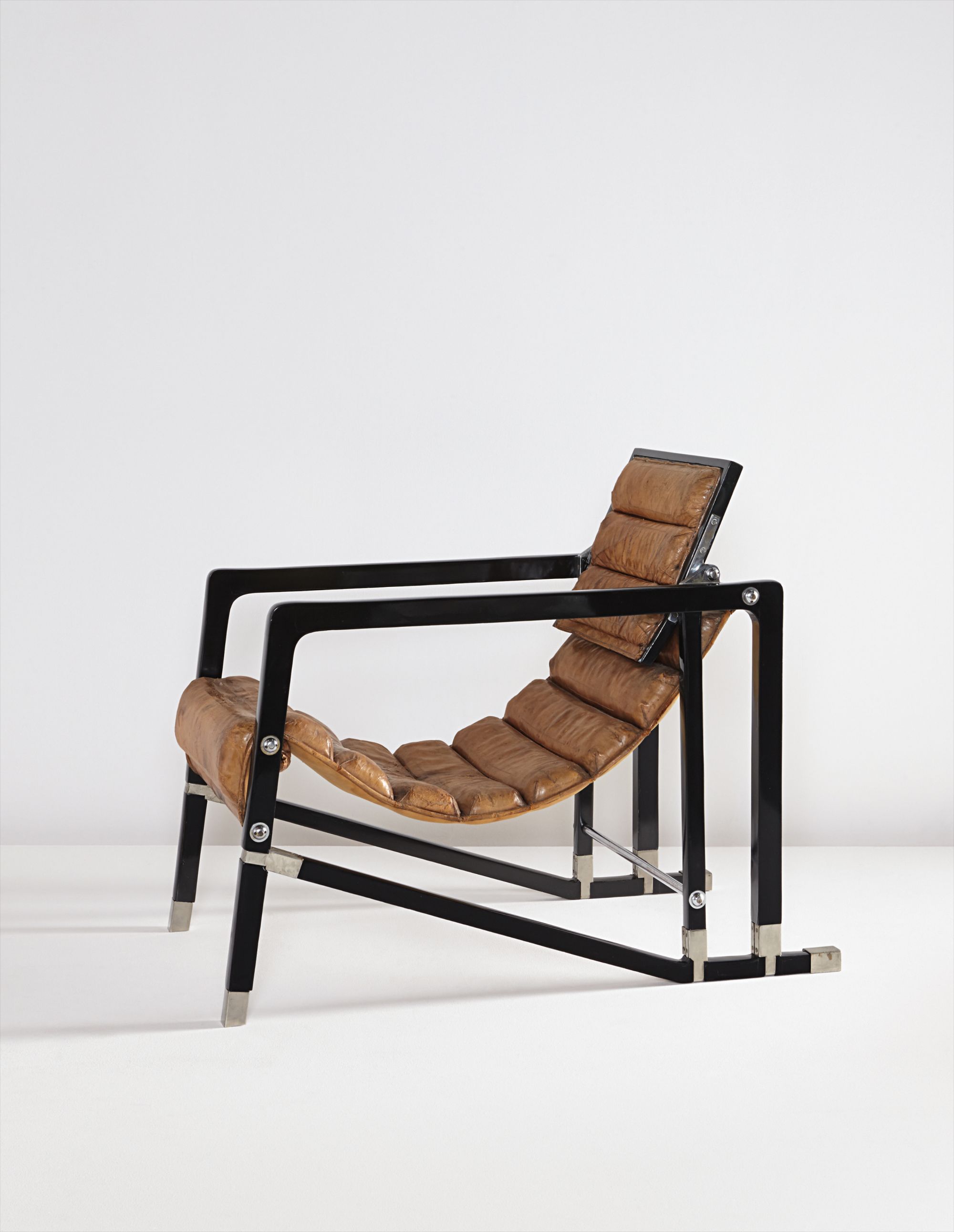

15
Eileen Gray
The Maharaja of Indore's "Transat" chair, from Manik Bagh Palace
Full-Cataloguing
After completing his preliminary studies in India, the young Maharaja of Indore Yashwant Rao Holkar II discovered western culture during his years spent as a student in England. It was there that he met the architect Eckhart Muthesius, whom he commissioned to design his palace, named Manik Bagh (Garden of Rubies) in Indore. Deceptively simple from the exterior, the sprawling interior was elaborately decorated with a vast array of iconic modernist works. The Maharaja’s attraction to modernity and architecture further developed during visits to important international art fairs in Paris, London and Berlin. During these frequent trips he would commission works from artists, architects and designers alike. Manik Bagh quickly became an homage to modernism, with important works by Émile-Jacques Ruhlmann, Louis Sognot, Charlotte Alix and Ivan da Silva Bruhns. The Maharaja filled his new palace with these acquisitions, creating a space that allowed the coexistence of both Indian and Western traditions. Muthesius stated of the results: “these modern installations and appliances, such as indirect lighting, metallic walls and ceilings, a generous use of glass in the rooms and fittings, cooling artificial leather, smooth woods and metal, invests the rooms of the palace with a pleasing air of dignity and comfort.”
The palace was carefully preserved until the Maharaja’s death in 1956, when the rooms were converted into offices. In 1976 during a period of political change the Maharaja’s privileges were revoked and the palace was consequently sold and the interior dismantled. In the intervening decades much of the furnishings and artwork has appeared on the market, most famously in the Sotheby’s 1980 auction, “Mobilier Moderniste: Provenant du Palais du Maharaja d’Indore.”
Eileen Gray designed the “Transat” (an abbreviation of “transatlantique”) in 1925-1926 for her Villa E 1027 in Roquebrune, on the Côte d'Azur. With an adjustable headrest and occasionally a sling seat, the chair was clearly informed by the simple functionalism of a deck chair, well-suited to her home that was itself intended to evoke a sense of living on a houseboat. The design marks Gray’s transition towards modernism which she embraced during the mid-1920s. The present iconic design is a perfect expression of her individualist approach, in which thoughtfully considered materials, artistic form and engagement with human behaviors are considered in her adoption of basic modernist principals.
The design was produced in small and long versions, with sycamore and lacquered arms, and with canvas, fabric, pony skin and leather seats. Twelve armchairs are known to have been created, and nine to exist. Of this small group, four are in sycamore and five in lacquer. The present example retains its original material pairing of black lacquer and natural leather. This unique and exquisite combination was in keeping with the color palette of the Maharaja of Indore’s bedroom in Manik Bagh’s palace.
"Transat" armchairs are in the permanent collections of The Centre Pompidou, Paris and the Victoria and Albert Museum, London.
Eileen Gray
Irish | B. 1878 D. 1976One of the most important designers working in early twentieth-century Paris was in fact an unlikely expatriate: an extraordinary, aristocratic woman from provincial Ireland named Eileen Gray. After completing studies in painting at the Slade in London, Gray moved to Paris in 1906. There she partnered with the Japanese lacquer master Seizo Sugawara, applying the traditional technique to her original designs. She opened her gallery, Jean Désert, in 1922 and found steady work producing luxury objects for an elite clientele.
Soon, however, she branched out to larger projects. As an interior designer, she completed apartments for Juliette Lévy and her friend Jean Badovici. Encouraged by Badovici, she learned architectural drawing and designed the villa E-1027 in Roquebrune-Cap-Martin, which was completed in 1929. Gray was largely forgotten until 1968, when the architectural historian Joseph Rykwert praised her in an article for Domus. Four years later her lacquer screen "Le Destin" achieved the top price in the historic auction of couturier Jacques Doucet's collection in Paris. Recognition — in the form of scholarship, exhibitions and collecting — has gained steady momentum ever since. As curator Jennifer Goff has written, "Collectors vie to own her furniture; historians compete to document her life."